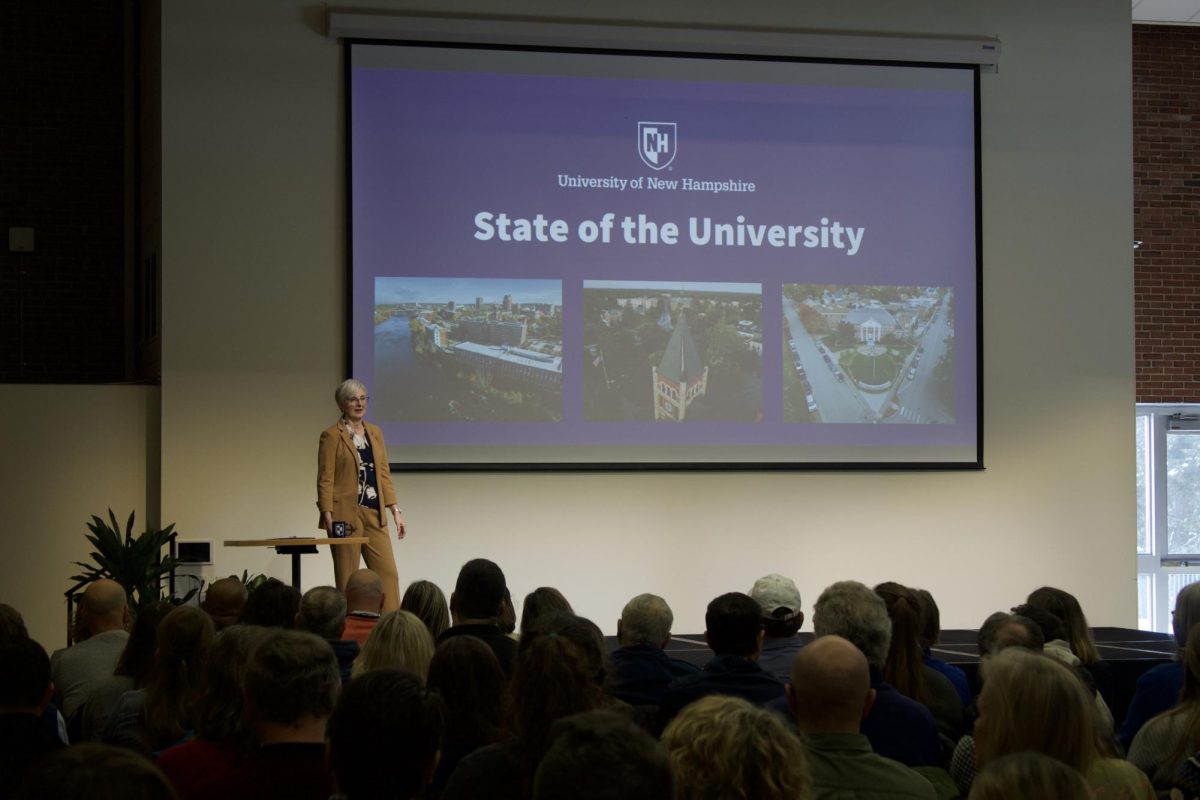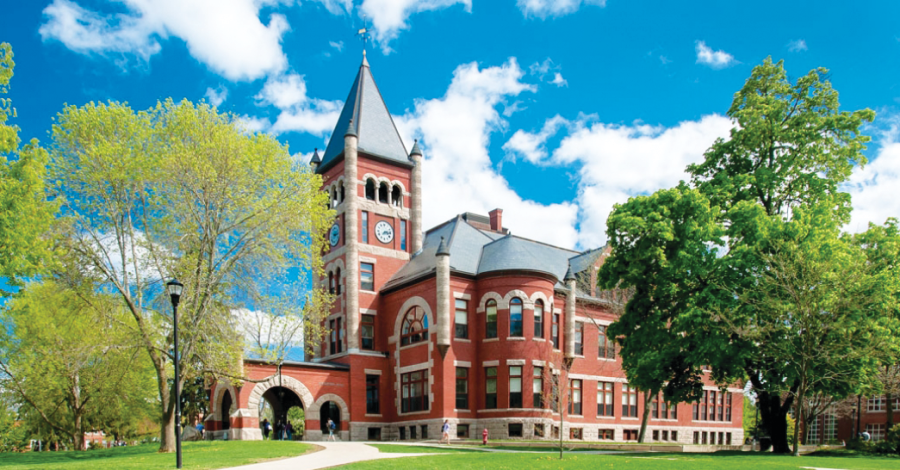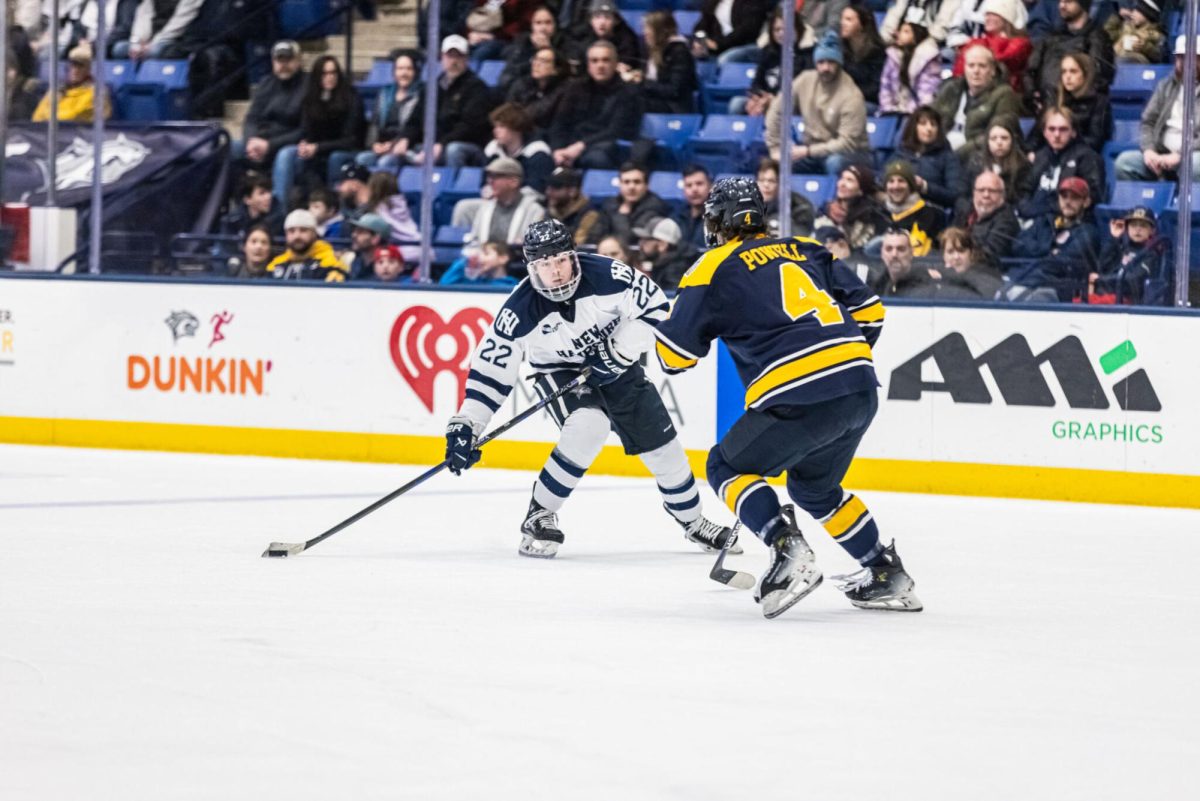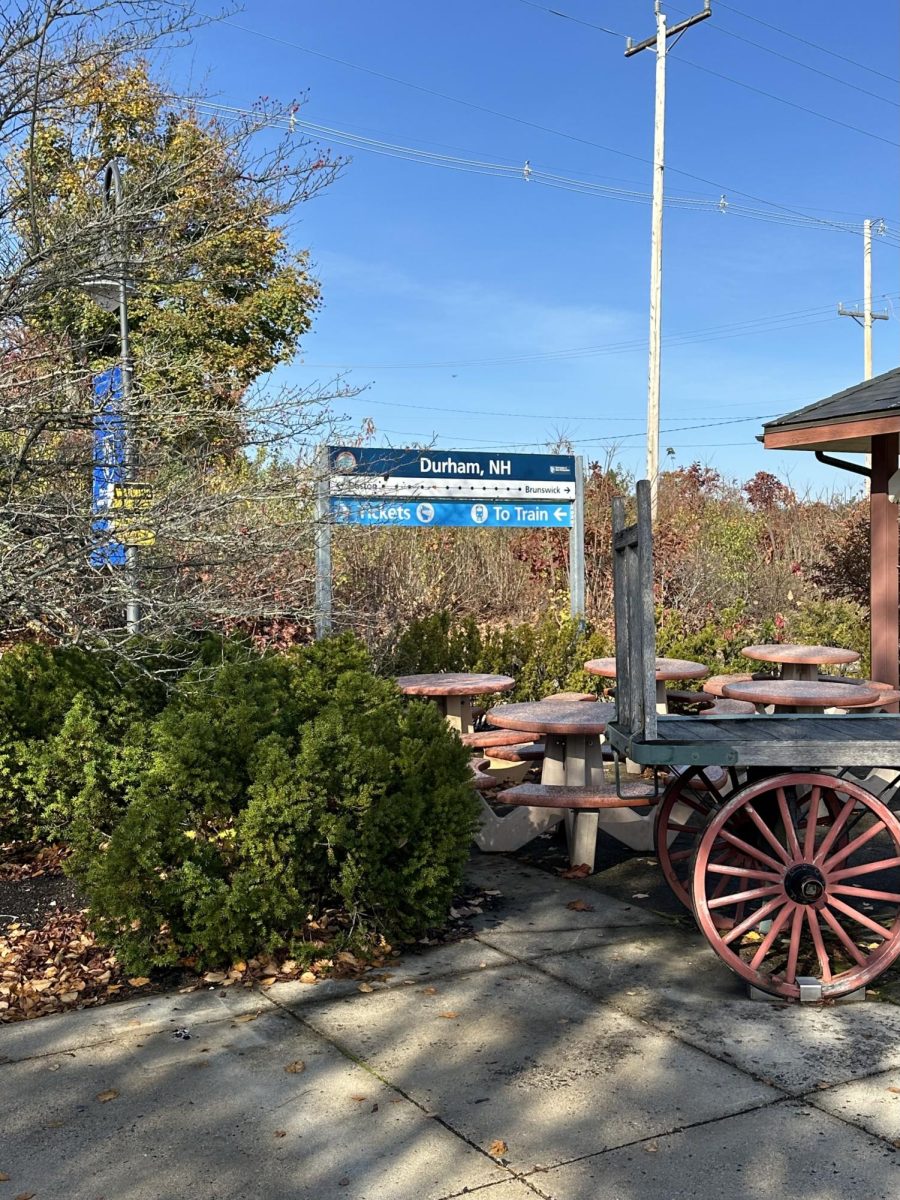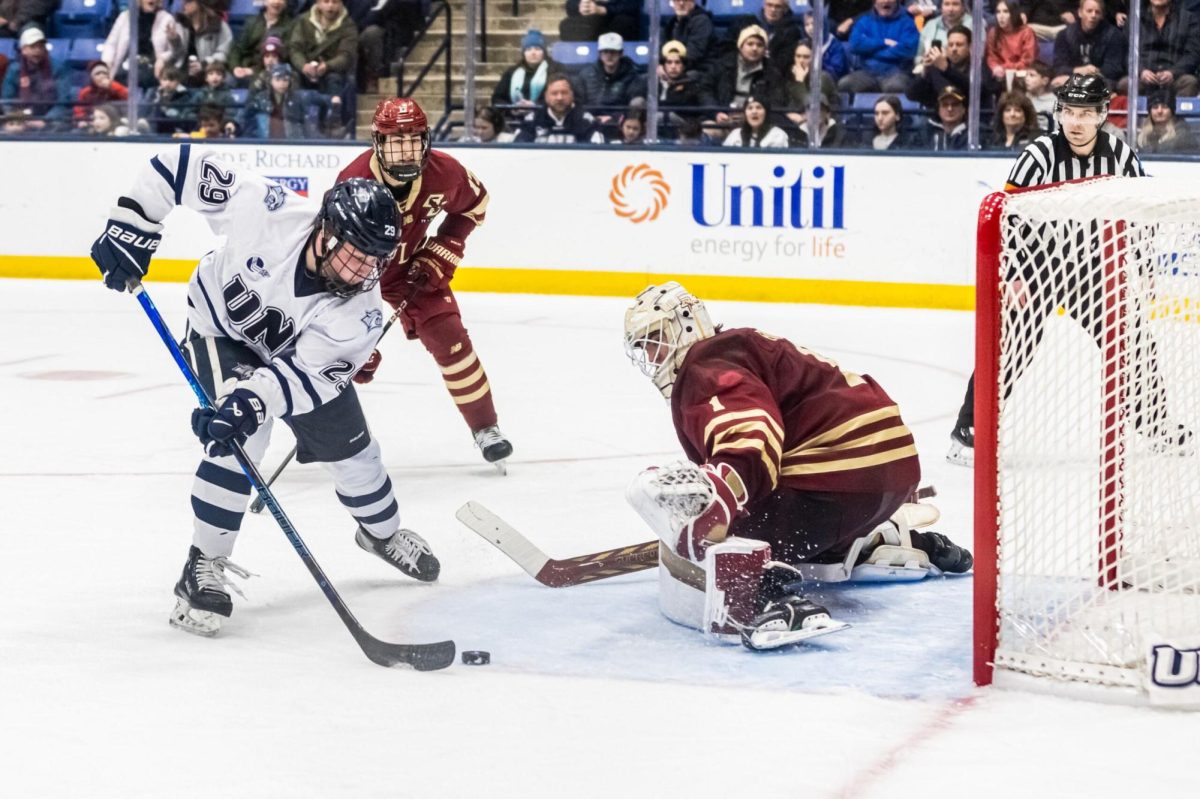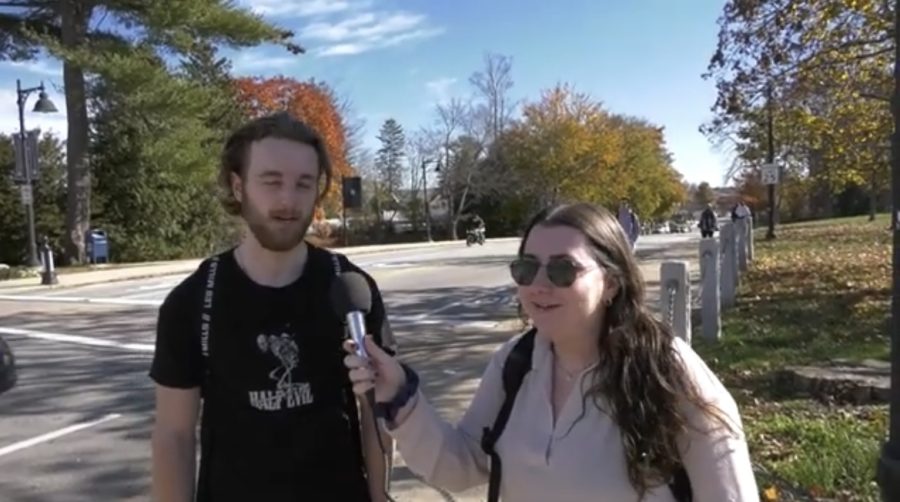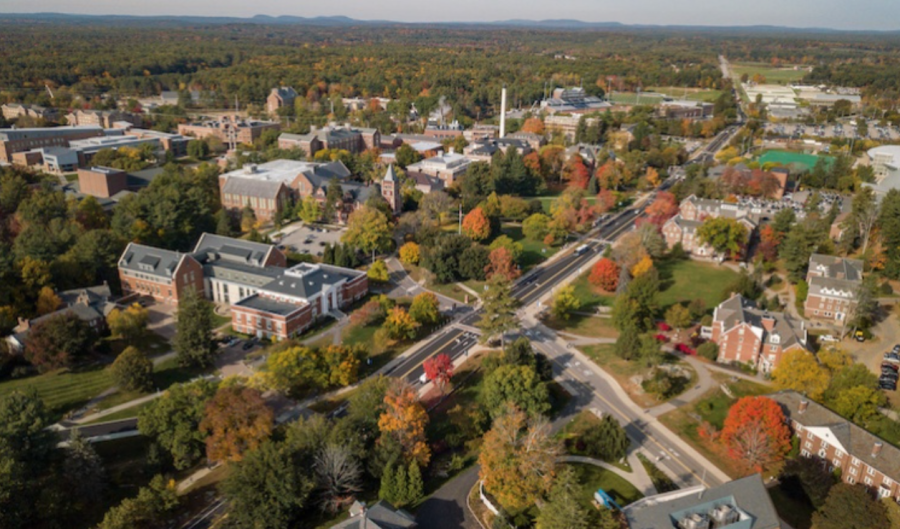At the University of New Hampshire, recent winter storms have turned campus walkways into icy obstacle courses, making it challenging, and sometimes dangerous to navigate. Students and faculty are growing increasingly concerned as snowy sidewalks remain uncleared. Many students have taken to social media to voice their frustrations about the university’s snow and ice removal efforts on YikYak.
Some students tried to make light of the situation, with one joking, “I should have just brought my sled,” referring to a snowy stairway near Dimond Library. Others, however, are raising safety concerns. One student posted: “Broke my ankle on black ice in the Mast Road parking lot Sunday night.” Another warned about the icy parking lots and walkways on campus near the Rec Center. Some students even suggested a petition for better plowing and salting. With complaints piling up, it’s uncertain whether the university will adjust its approach to snow removal.
Adding to the frustration was the university’s delayed response to a recent storm. On Thursday, Feb. 6, UNH announced a
curtailment of operations due to an incoming winter storm. The closure began at 12:30 p.m. and lasted until 4:00 a.m. on February 7. Before the announcement, students and faculty expressed their concerns about the university remaining open despite the worsening weather. By the time the curtailment was announced, snow had already made roads slippery and hazardous. The closure was a relief for many, but it also left students and faculty questioning why the decision hadn’t been made sooner. Many continue to call for faster action and better snow removal.
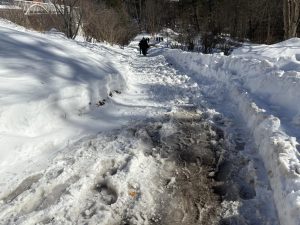
The issue of snow removal and curtailment was addressed during UNH President Elizabeth S. Chilton’s State of the University Address on Tuesday, Feb. 11. In response to concerns, campus officials acknowledged the challenges involved in making curtailment decisions and maintaining safe walkways. Speaker Aaron Allen, who oversees facilities and campus safety, described snow removal as an “all hands on deck” effort, relying on both student workers and full-time staff. However, he admitted that some areas don’t get cleared as quickly or thoroughly as needed. “We know that there are times where some spaces on campus may not get as cleared as optimal,” he said. He encouraged students to report problem spots through a facilities ticket or by reaching out directly.
As for curtailment decisions, Allen explained that they depend on weather data and input from campus safety teams when deciding whether to cancel classes. However, he acknowledged that the timing of the most recent curtailment wasn’t ideal. “I wish we could be perfect on this. We can’t,” He went on to apologize for the delayed decision, adding that the university is working to improve the process and make more informed choices in the future.
Days after the address, a series of winter storms put UNH’s curtailment process to the test. On Wednesday, Feb. 12, UNH alerted students and faculty that the university would delay opening on Thursday, Feb. 13, until 11 a.m. As conditions worsened, the university extended the delay to 12:30 p.m. that afternoon.

Despite efforts to manage the winter weather, another winter storm arrived over the weekend, bringing fresh challenges. Snowfall began Saturday night and continued through Sunday, Feb. 16, covering Durham. UNH responded by limiting services, closing certain buildings, and reducing transportation due to the hazardous conditions. Many students and faculty found it difficult to move across campus as the storm left the roads and sidewalks slick and parking lots covered in snow.
The winter weather continued into Monday, Feb. 17, with arctic temperatures and high winds making conditions worse. UNH delayed opening until 11 a.m., but even after the delay, many walkways were still icy and unplowed. The bitter cold and strong winds made getting to class even more difficult, reigniting concerns over the university’s snow removal efforts.
With more snow likely in the coming weeks, the university faces growing pressure to improve its storm response and prioritize campus safety. In the meantime, the community is left to carefully navigate the slippery walkways, hoping for improvements in the weeks ahead.


